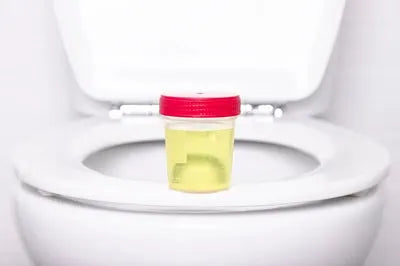The first time Rajiv experienced urine leaks, he was too ashamed to tell anyone. Once an independent and active man, his stroke had already taken so much from him—his ease of movement, his confidence, and now, his control over his bladder. He avoided outings, dreading the embarrassment of an accident. Each day felt like a reminder of all he had lost, and the frustration, fear, and grief became heavier with time.
Many stroke survivors face the same silent struggle.
Losing control over something so private is not just a physical inconvenience. It carries an emotional toll that can feel unbearable. The embarrassment, the isolation, and the feeling that your body is no longer your own can be devastating. But there is hope. While it may seem impossible at times, there are ways to regain control, comfort, and confidence.
Understanding Urinary Problems Post-Stroke
The brain plays a crucial role in bladder control, and when a stroke disrupts its functions, urinary problems can arise. These issues may manifest as urinary incontinence, urgency, frequency, or urinary retention.
Common Urology Problems Post-Stroke:
1. Urge Incontinence:
A sudden, strong urge to urinate, often leading to accidental leakage before reaching a toilet.
2. Stress Incontinence:
Leakage occurs when pressure is applied to the bladder, such as during coughing, sneezing, or lifting objects.
3. Overflow Incontinence:
Incomplete bladder emptying results in frequent dribbling of urine.
4. Urinary Retention:
The inability to fully empty the bladder, causing discomfort and increasing the risk of infections.
Urinary problems in men can sometimes be confused with prostate-related issues, making it crucial to seek a professional urology assessment for accurate diagnosis and treatment. Additionally, urinary bladder problems can lead to complications such as recurrent urinary tract infections (UTIs) and kidney damage if left untreated.
Treatment and Management Strategies
Addressing urology problems after a stroke involves a combination of medical treatment, lifestyle modifications, and practical solutions.
1. Medical Approaches
-
Medications:
Doctors may prescribe anticholinergic drugs to control bladder overactivity or alpha-blockers to assist with urinary retention.
-
Catheterization:
In cases of severe urinary retention, intermittent or indwelling catheters may be required.
-
Pelvic Floor Therapy:
Strengthening pelvic muscles through targeted exercises can improve bladder control.
-
Neuromodulation Therapy:
Electrical stimulation of the nerves regulating bladder function may provide relief in some cases.
-
Botox Injections:
For individuals with an overactive bladder, Botox injections can help reduce urgency and frequency by relaxing the bladder muscles.
-
Surgical Options:
In extreme cases, surgical interventions such as sling procedures or artificial urinary sphincters may be considered.
2. Lifestyle and Behavioural Modifications
-
Bladder Training:
Establishing a scheduled toileting routine helps reduce urgency and leakage.
-
Fluid Management:
Drinking sufficient but not excessive amounts of water helps prevent dehydration without overloading the bladder.
-
Dietary Changes:
Reducing caffeine, alcohol, and spicy foods can minimize bladder irritation.
-
Weight Management:
Maintaining a healthy weight alleviates pressure on the bladder and pelvic muscles.
-
Avoiding Constipation:
A high-fibre diet and proper hydration can help prevent constipation, which can worsen urinary problems by putting additional pressure on the bladder.
-
Timed Voiding:
Setting a regular schedule for urination, even before the urge arises, can help train the bladder to follow a routine and prevent sudden leaks.
-
Kegel Exercises:
Performing daily pelvic floor exercises can strengthen the muscles responsible for bladder control and improve continence over time.
3. Using Absorbent Products for Comfort and Confidence
Facing urinary problems after a stroke can be overwhelming, often bringing feelings of frustration and loss of control—but you are not alone, and support is available. For those dealing with incontinence, using high-quality absorbent products like Friends Easy Adult Diapers can offer reassurance and freedom.
Friends Bed Bath Towels offer a gentle, waterless cleansing option, making hygiene maintenance easier and more comfortable for stroke survivors. Friends Underpads act as an extra layer of protection, keeping bedding and furniture dry while enhancing overall comfort. With these reliable products, stroke survivors can navigate their daily lives with dignity, confidence, and ease.
Caregiver Support and Guidance
Caring for a loved one with post-stroke urinary bladder problems requires patience, empathy, and practical solutions. Here are some key considerations:
1. Encouraging Open Communication
Many stroke survivors may feel embarrassed discussing their urinary issues. Creating a safe, judgment-free space encourages them to express their needs and concerns. Caregivers should reassure their loved ones that urinary problems in men are common post-stroke and that solutions exist to help them manage effectively.
2. Assisting with Hygiene and Toileting
-
Ensure easy access to the bathroom, possibly with grab bars and raised toilet seats.
-
Use waterproof bed protectors and absorbent pads for added security at night.
-
Encourage regular toileting to prevent accidents and infections.
-
Assist with perineal hygiene to reduce the risk of skin irritation and infections.
-
Consider using adaptive clothing with Velcro or elastic waistbands to make dressing and undressing easier.
-
Arrange for professional nursing support if incontinence becomes difficult to manage at home.
3. Emphasising Emotional Well-being
Urinary problems can affect self-esteem and mental health. Providing reassurance and promoting independence where possible can significantly boost confidence. Stroke survivors may feel frustrated or withdrawn due to their condition, so offering emotional support and encouragement is essential in their recovery journey.
Encouraging participation in social activities, support groups, or therapy sessions can help individuals regain confidence and reduce the emotional burden associated with urinary problems.
4. Recommending Reliable Products
Products such as Friends Bed Bath Towels offer the freshness of a bath with the convenience of a wet wipe. These are made of fine cotton-like fiber, they are anti-bacterial, pH-balanced, alcohol-free, and enriched with jojoba, aloe vera, and chamomile to keep skin soft and irritation-free.
Urinary problems following a stroke can be challenging, but with the right management strategies, they do not have to diminish a person’s quality of life. Understanding the underlying causes, exploring medical and lifestyle interventions, and using absorbent products where necessary can make a significant difference. Caregivers also play a vital role in providing compassionate support, ensuring stroke survivors maintain their dignity and independence. With the right approach, overcoming urinary issues post-stroke is possible, allowing individuals to lead more comfortable and confident lives.
Product Recommendations
FAQs
How to control urine after a stroke?
Bladder control post-stroke can be managed through bladder training, pelvic floor exercises, scheduled voiding, and using absorbent products like adult diapers. Reducing bladder irritants (caffeine, alcohol) and staying hydrated also help.
How do you treat urinary retention after a stroke?
Treatment includes catheterisation, medications (such as alpha-blockers), bladder training, and, in some cases, neuromodulation therapy. A urologist may also recommend physical therapy to strengthen bladder control.
What are the best exercises to strengthen bladder control post-stroke?
Kegel exercises, pelvic floor muscle training, deep breathing, and core-strengthening workouts help improve bladder control. Regularly practising these exercises can reduce incontinence and enhance bladder function.
How can caregivers assist without causing embarrassment?
Caregivers should offer discreet assistance, encourage independence, and provide easy bathroom access. Using neutral language, absorbent products, and maintaining hygiene with respect can help preserve dignity.
Are there any medical procedures to improve bladder control post-stroke?
Yes, options include Botox injections for an overactive bladder, sacral nerve stimulation, and, in severe cases, surgical interventions like sling procedures or artificial urinary sphincters. A doctor can determine the best approach.





















